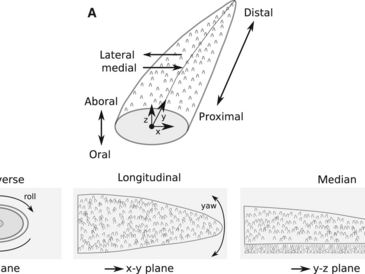Lena Schwertmann, Oliver Focke, Jan‐Henning Dirks
Journal of Anatomy (2019) 234, 656-667
https://doi.org/10.1111/joa.12964
Starfish (order: Asteroidea) possess a complex endoskeleton composed of thousands of calcareous ossicles. These ossicles are embedded in a body wall mostly consisting of a complex collagen fiber array. The combination of soft and hard tissue provides a challenge for detailed morphological and histological studies. As a consequence, very little is known about the general biomechanics of echinoderm endoskeletons and the possible role of ossicle shape in enabling or limiting skeletal movements. In this study, we used high‐resolution X‐ray microscopy to investigate individual ossicle shape in unprecedented detail. Our results show the variation of ossicle shape within ossicles of marginal, reticular and carinal type. Based on these results we propose an additional classification to categorize ossicles not only by shape but also by function into ‘connecting’ and ‘node’ ossicles. We also used soft tissue staining with phosphotungstic acid successfully and were able to visualize the ossicle ultrastructure at 2‐μm resolution. We also identified two new joint types in the aboral skeleton (groove‐on‐groove joint) and between adambulacral ossicles (ball‐and‐socket joint). To demonstrate the possibilities of micro‐computed tomographic methods in analyzing the biomechanics of echinoderm skeletons we exemplarily quantified changes in ossicle orientation for a bent ray for ambulacral ossicles. This study provides a first step for future biomechanical studies focusing on the interaction of ossicles and soft tissues during ray movements.


